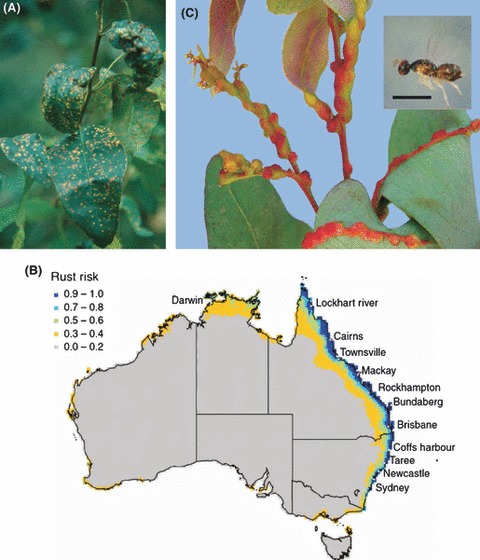Figure 2.

Eucalyptus is a major source of fibre and wood products. The majority of plantations are located outside of Australia and the number of native and exotic pests and pathogens is increasing. (A) Guava rust (Puccinia psidii) on Eucalyptus (photograph copyright CSIRO) is a serious disease threat to numerous native flora and eucalypt forests in Australia. The fungus is native to South America where it causes rust disease on a broad range of myrtaceous hosts and severe damage to introduced eucalypt plantations. It has spread to Florida and Hawaii and a member of the guava rust complex was detected on the Central Coast of NSW in April 2010 (Carnegie et al. 2010). (B) Bioclimatic predictions of guava rust disease regions in Australia span tropical, subtropical and some temperate plantation zones (Glen et al. 2007; map courtesy of T. H. Booth and T. Jovanovic, personal communication). Gall wasp (Leptocybe invasa) forms galls on leaf midribs, petioles and stems of new growth of several eucalypt species (Jacob and Kumar 2009). The wasp was first described after being detected in exotic eucalypt plantations in Israel in 2000 and has spread to most international plantation regions. Planting of eucalypts was temporarily suspended in Israel, and some of the most widely planted eucalypt clones in southern India are now unproductive. The emergence of gall wasp has highlighted the risks of reduced genetic diversity in clonal forestry operations. Bar = 1 mm. (Photo courtesy of John Jacob, Institute of Forest Genetics and Tree Breeding, Coimbatore, Tamil Nadu, India).
